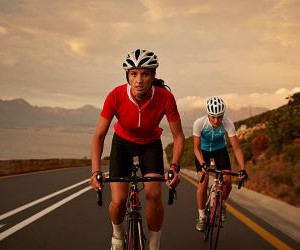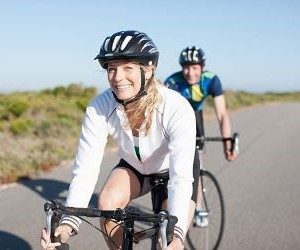HOW DO I AVOID CRAMPS DURING HOT-WEATHER RACES?
Cramps are the nightmare of endurance athletes, striking suddenly and threatening performance, especially in hot-weather races. High temperatures accelerate fluid loss, electrolyte imbalance, and muscular fatigue, all of which increase the risk of cramps. However, research shows that proper hydration, nutrition, pacing, and heat adaptation significantly reduce the risk. This article explores evidence-based strategies athletes can use to minimize cramps and perform at their best in hot conditions.

Understanding cramps in heat
Cramps are involuntary, painful muscle contractions often triggered by fatigue, dehydration, or electrolyte imbalance. In hot conditions, sweat losses accelerate, leading to rapid depletion of sodium, potassium, and magnesium. Combined with higher cardiovascular strain, the body struggles to maintain muscle function, making cramps more likely during endurance events.
While the exact cause of cramps remains debated, two dominant theories explain their prevalence in hot-weather races: the electrolyte depletion theory and the neuromuscular fatigue theory. Most experts now agree that both factors interact—fluid imbalance weakens muscle performance, while overexertion disrupts neuromuscular signals, creating the “perfect storm” for cramps.
Key contributing factors
Athletes facing cramps in hot races often experience overlapping triggers:
Excessive sweat loss without adequate fluid replacement.
Low sodium and electrolyte concentrations in blood plasma.
Muscle fatigue from high-intensity or prolonged exertion.
Poor heat acclimatization leading to faster energy depletion.
Inadequate pacing or sudden surges in effort.
By addressing both hydration and neuromuscular control, athletes can significantly reduce the incidence of cramps in hot-weather conditions.
Hydration and electrolyte strategies
Preventing cramps in heat starts with a deliberate hydration and electrolyte plan. Athletes need to replace not just water but also the sodium and minerals lost in sweat. Drinking only water without electrolytes can dilute blood sodium, increasing cramp risk—a condition known as hyponatremia. Balanced hydration strategies are essential for hot-weather performance.
Pre-race hydration
Athletes should begin races well-hydrated. This means consuming fluids with electrolytes in the 24 hours prior, not just drinking large amounts immediately before the start. Preloading with sodium-rich fluids enhances fluid retention and prepares the body for high sweat losses.
During-race hydration
During competition, the goal is to match fluid intake to sweat rate as closely as possible. This typically ranges between 400–800 ml per hour, depending on body size and heat intensity. Electrolyte drinks with 400–700 mg of sodium per liter are most effective for maintaining balance.
Electrolyte supplements
In longer events, tablets, gels, or capsules with sodium, magnesium, and potassium provide additional support. These supplements help sustain neuromuscular function and reduce the likelihood of mid-race cramping.
Hydrate steadily in the 24 hours before the race.
Use sodium-rich drinks for fluid retention.
Replace 400–800 ml of fluids per hour during the race.
Include electrolyte supplements for long events.
Avoid overhydration with plain water.
Tailoring hydration plans to individual sweat rates—measured during training—provides the best defense against cramps in hot-weather races.
Training, pacing, and recovery
Beyond hydration, athletes must prepare their muscles and nervous system for the demands of hot-weather racing. Proper training, heat acclimatization, pacing, and recovery strategies all play critical roles in minimizing cramp risk.
Heat adaptation
Training in hot conditions gradually teaches the body to sweat more efficiently and retain electrolytes. Adaptations typically require 7–14 days of progressive heat exposure, significantly lowering the risk of cramps during competition.
Strength and flexibility
Stronger, more flexible muscles resist fatigue and cramping. Strength training for the lower body, combined with dynamic stretching and mobility drills, enhances resilience under heat stress.
Race pacing
Many cramps occur when athletes surge beyond their sustainable pace. Smart pacing—avoiding sudden spikes in intensity—helps maintain neuromuscular control. Using power meters or heart rate monitoring ensures effort stays consistent.
Post-race recovery
Proper recovery with rehydration, electrolyte replacement, and gentle stretching reduces residual cramp risk. Cold immersion and compression techniques also aid muscle relaxation and repair.
Heat acclimatization through gradual exposure.
Strength training and flexibility drills for resilience.
Pacing strategies to avoid overexertion.
Post-race hydration and electrolyte replenishment.
Active recovery techniques for muscle relaxation.
When combined, these training and recovery practices minimize neuromuscular fatigue and optimize hydration strategies, making cramps far less likely in hot-weather competitions.






